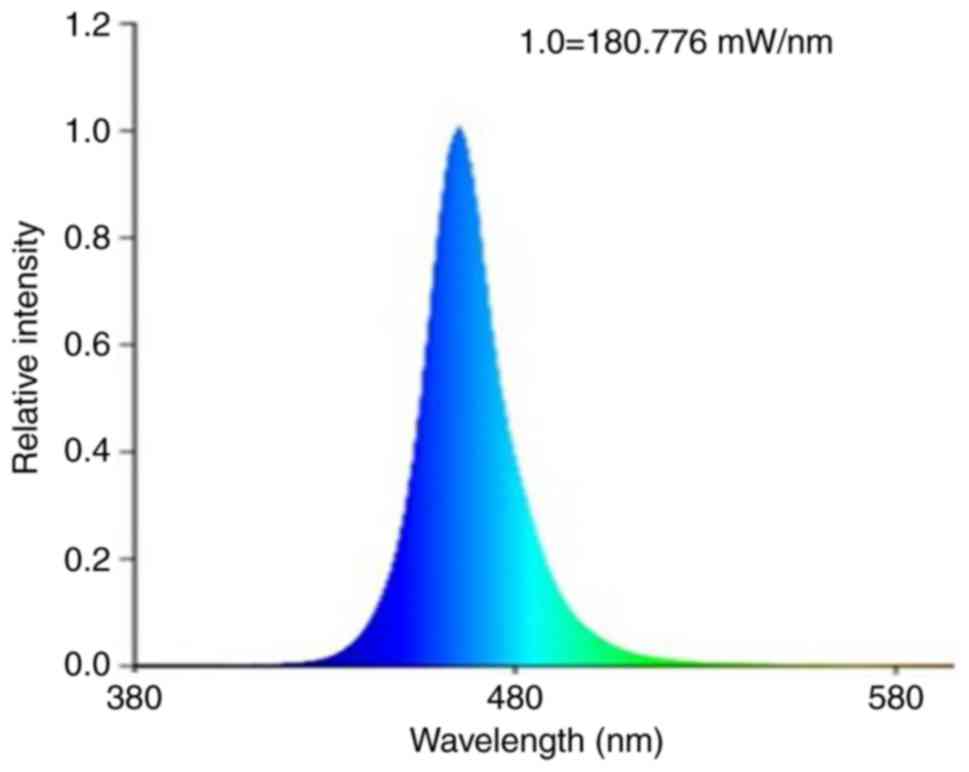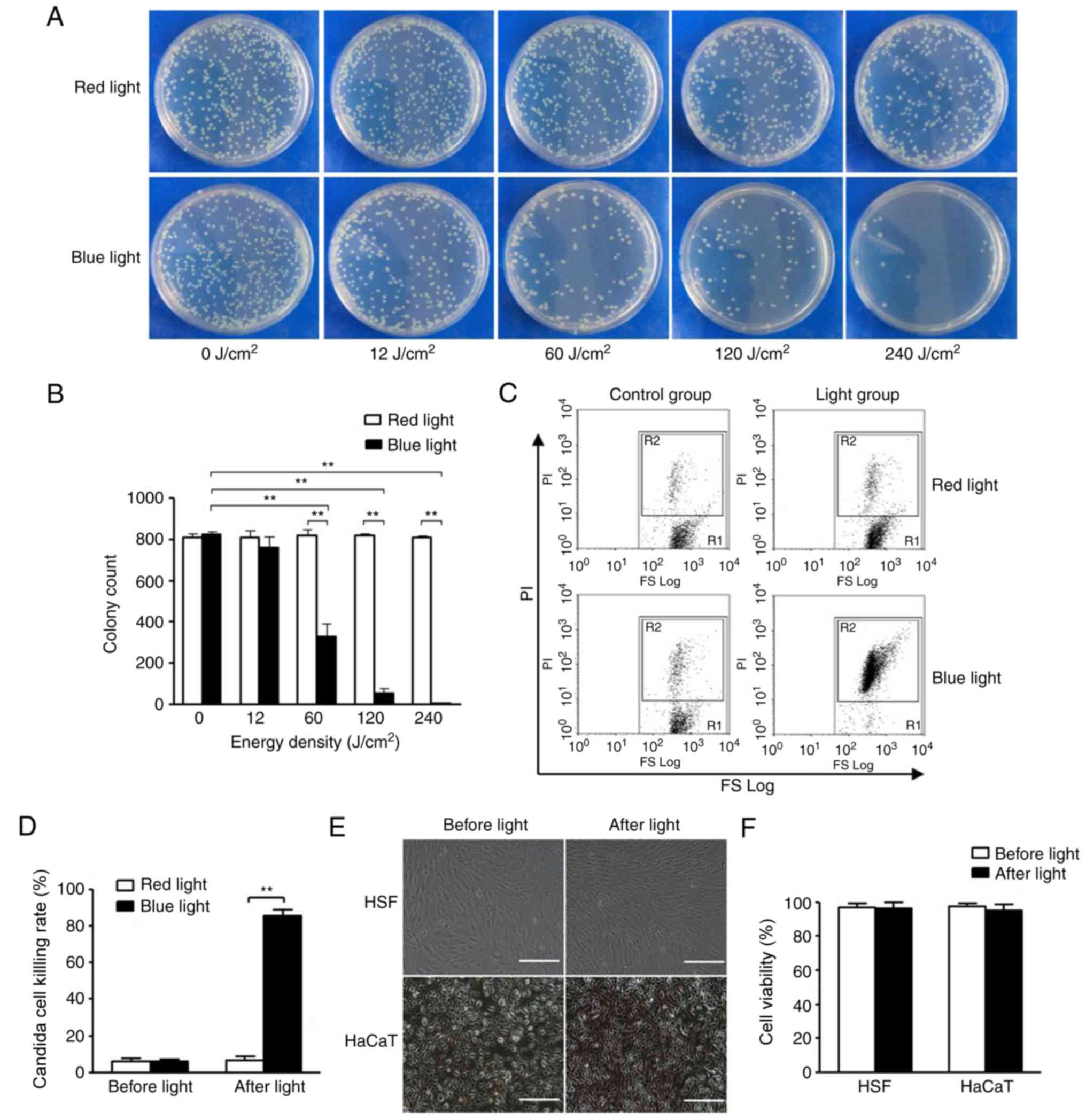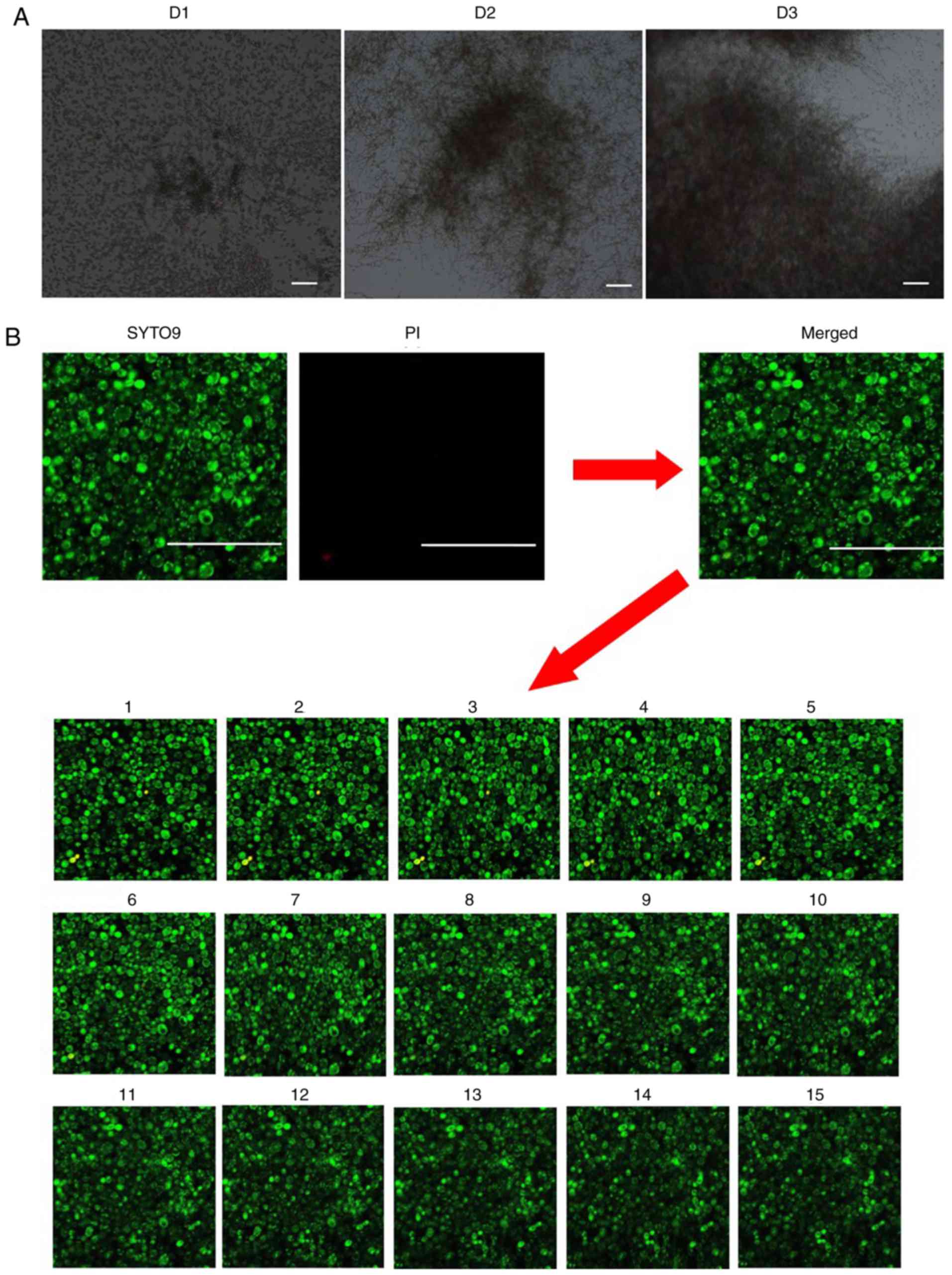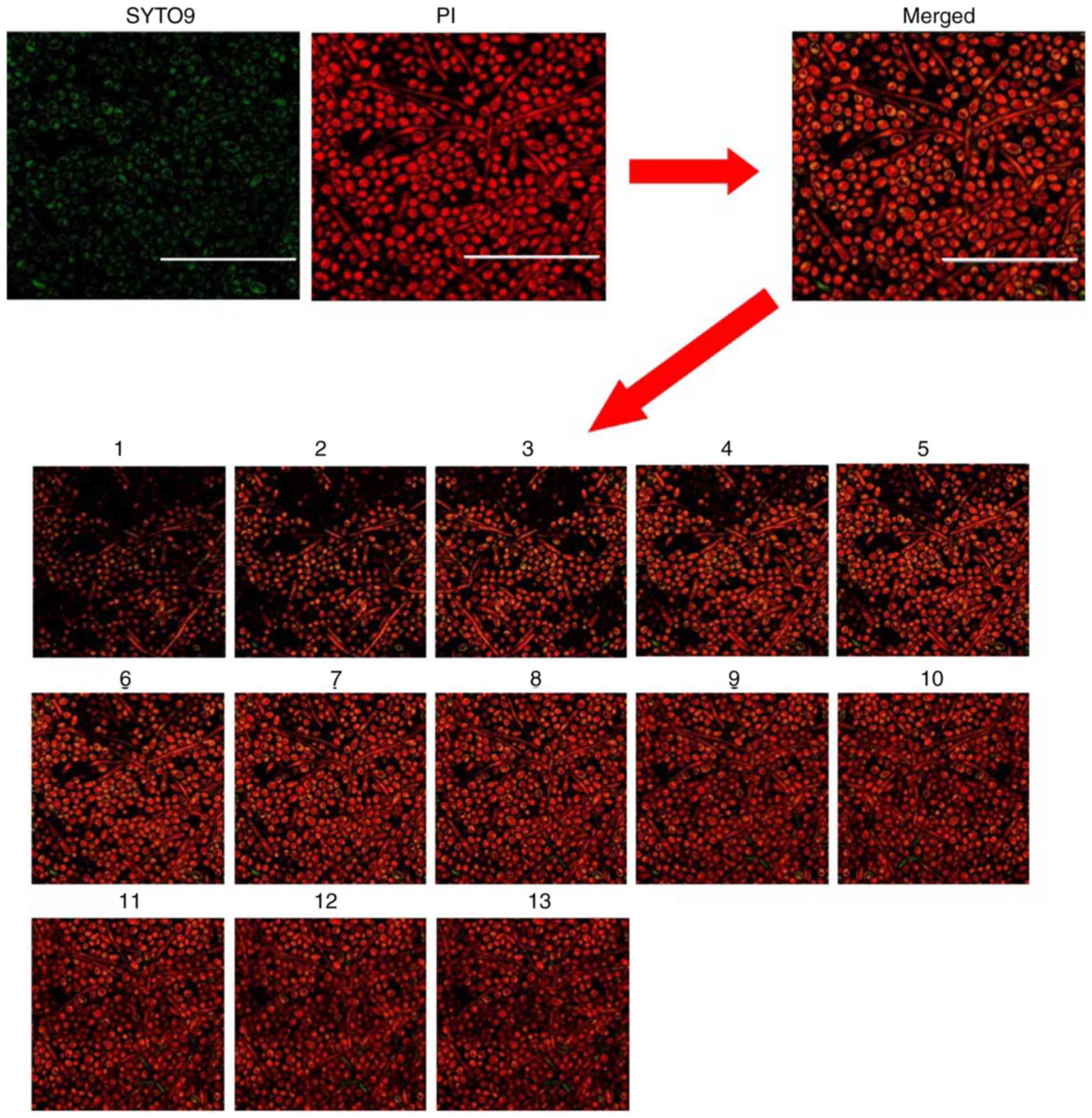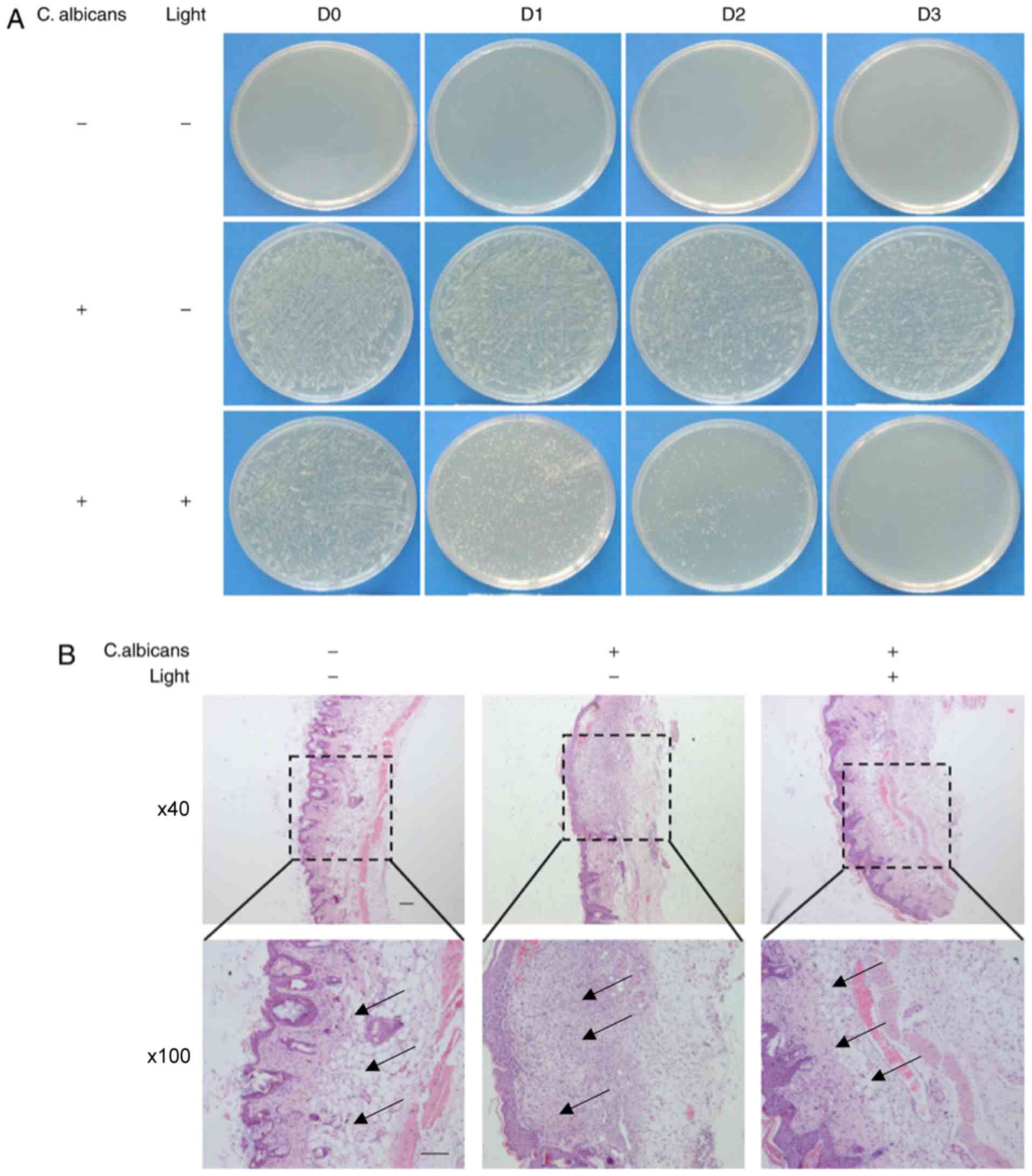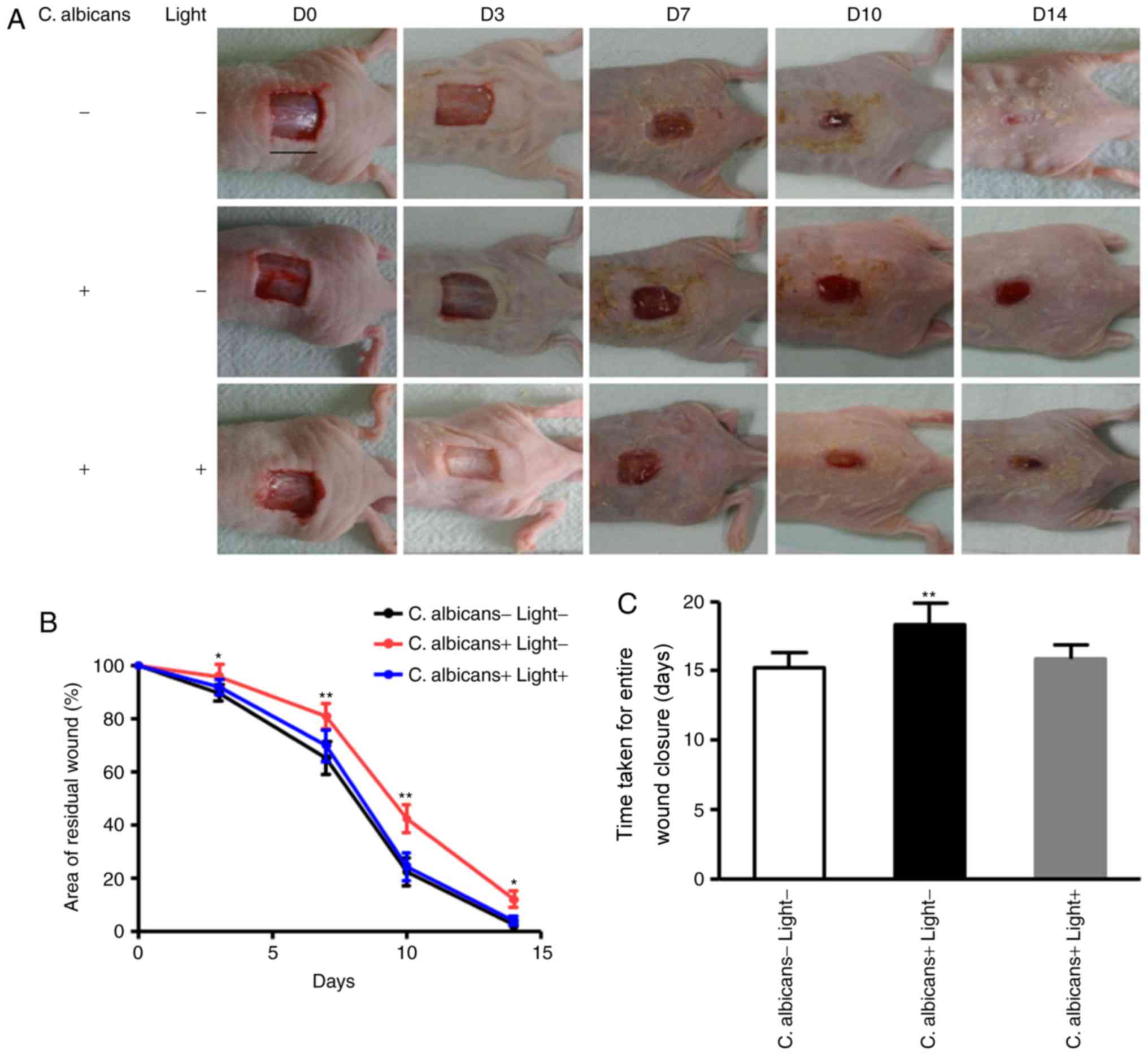|
1
|
Raman N, Lee MR, Palecek SP and Lynn DM:
Polymer multilayers loaded with antifungal β-peptides kill
planktonic Candida albicans and reduce formation of fungal
biofilms on the surfaces of flexible catheter tubes. J Control
Release. 10:54–62. 2014. View Article : Google Scholar
|
|
2
|
Gulati M, Ennis CL, Rodriguez DL and
Nobile CJ: Visualization of biofilm formation in candida
albicans using an automated microfluidic device. J Vis Exp. Dec
14–2017.doi: 10.3791/56743. View
Article : Google Scholar
|
|
3
|
Rex JH, Walsh TJ, Sobel JD, Filler SG,
Pappas PG, Dismukes WE and Edwards JE: Practice guidelines for the
treatment of candidiasis. Infectious diseases society of America.
Clin Infect Dis. 30:662–678. 2000. View
Article : Google Scholar : PubMed/NCBI
|
|
4
|
Huang M and Kao KC: Population dynamics
and the evolution of antifungal drug resistance in Candida
albicans. FEMS Microbiol Lett. 333:85–93. 2012. View Article : Google Scholar : PubMed/NCBI
|
|
5
|
de Carvalho Dias K, Barbugli PA, de Patto
F, Lordello VB, de Aquino Penteado L, Medeiros AI and Vergani CE:
Soluble factors from biofilm of Candida albicans and
Staphylococcus aureus promote cell death and inflammatory
response. BMC Microbiol. 17:1462017. View Article : Google Scholar : PubMed/NCBI
|
|
6
|
Blankenship JR and Mitchell AP: How to
build a biofilm: A fungal perspective. Curr Opin Microbiol.
9:588–594. 2006. View Article : Google Scholar : PubMed/NCBI
|
|
7
|
Chandra J, Kuhn DM, Mukherjee PK, Hoyer
LL, Mccormick T and Ghannoum MA: Biofilm formation by the fungal
pathogen Candida albicans: Development, architecture, and
drug resistance. J Bacteriol. 183:5385–5394. 2001. View Article : Google Scholar : PubMed/NCBI
|
|
8
|
Kaneko Y, Miyagawa S, Takeda O, Hakariya
M, Matsumoto S, Ohno H and Miyazaki Y: Real-time microscopic
observation of Candida biofilm development and effects due to
micafungin and fluconazole. Antimicrob Agents Chemother.
57:2226–2230. 2013. View Article : Google Scholar : PubMed/NCBI
|
|
9
|
Uppuluri P, Chaturvedi AK, Srinivasan A,
Banerjee M, Ramasubramaniam AK, Köhler JR, Kadosh D and Lopez-Ribot
JL: Dispersion as an important step in the Candida albicans
biofilm developmental cycle. PLoS Pathog. 6:e10008282010.
View Article : Google Scholar : PubMed/NCBI
|
|
10
|
Chandra J, Mukhrjee PK, Leidich SD,
Faddoul FF, Hoyer LL, Douglas LJ and Ghannoum MA: Antifungal
resistance of candidal biofilms formed on denture acrylic in vitro.
J Dent Res. 80:903–908. 2001. View Article : Google Scholar : PubMed/NCBI
|
|
11
|
Dai T, Gupta A, Huang YY, Yin R, Murray
CK, Vrahas MS, Sherwood ME, Tegos GP and Hamblin MR: Blue light
rescues mice from potentially fatal Pseudomonas aeruginosa
burn infection: Efficacy, safety, and mechanism of action.
Antimicrob Agents Chemother. 57:1238–1245. 2013. View Article : Google Scholar : PubMed/NCBI
|
|
12
|
Zhang Y, Zhu Y, Gupta A, Huang Y, Murray
CK, Vrahas MS, Sherwood ME, Baer DG, Hamblin MR and Dai T:
Antimicrobial blue light therapy for multidrug-resistant
Acinetobacter baumannii infection in a mouse burn model:
Implications for prophylaxis and treatment of combat-related wound
infections. J Infect Dis. 209:1963–1971. 2014. View Article : Google Scholar : PubMed/NCBI
|
|
13
|
Enwemeka CS, Williams D, Enwemeka SK,
Hollosi S and Yens D: Blue 470-nm light kills methicillin-resistant
Staphylococcus aureus (MRSA) in vitro. Photomed Laser Surg.
27:221–226. 2009. View Article : Google Scholar : PubMed/NCBI
|
|
14
|
Enwemeka CS, Williams D, Hollosi S, Yens D
and Enwemeka SK: Visible 405 nm SLD light photo-destroys
methicillin-resistant Staphylococcus aureus (MRSA) in vitro.
Lasers Surg Med. 40:734–737. 2008. View Article : Google Scholar : PubMed/NCBI
|
|
15
|
Dai T, Gupta A, Murray CK, Vrahas MS,
Tegos GP and Hamblin MR: Blue light for infectious diseases:
Propionibacterium acnes, Helicobacter pylori, and beyond?
Drug Resist Updat. 15:223–236. 2012. View Article : Google Scholar : PubMed/NCBI
|
|
16
|
Halstead FD, Thwaite JE, Burt R, Laws TR,
Raguse M, Moeller R, Webber MA and Oppenheim BA: Antibacterial
activity of blue light against nosocomial wound pathogens growing
planktonically and as mature biofilms. Appl Environ Microbiol.
82:4006–4016. 2016. View Article : Google Scholar : PubMed/NCBI
|
|
17
|
Dai T, Gupta A, Huang YY, Sherwood ME,
Murray CK, Vrahas MS, Kielian T and Hamblin MR: Blue light
eliminates community-acquired methicillin-resistant
Staphylococcus aureus in infected mouse skin abrasions.
Photomed Laser Surg. 31:531–538. 2013. View Article : Google Scholar : PubMed/NCBI
|
|
18
|
Guffey JS and Wilborn J: In vitro
bactericidal effects of 405-nm and 470-nm blue light. Photomed
Laser Surg. 24:684–688. 2006. View Article : Google Scholar : PubMed/NCBI
|
|
19
|
Yang P, Wang N, Wang C, Yao Y, Fu X, Yu W,
Cai R and Yao M: 460 nm visible light irradiation eradicates MRSA
via inducing prophage activation. J Photochem Photobiol B.
166:311–322. 2017. View Article : Google Scholar : PubMed/NCBI
|
|
20
|
Zhang Y, Zhu Y, Chen J, Wang Y, Sherwood
ME, Murray CK, Vrahas MS, Hooper DC, Hamblin MR and Dai T:
Antimicrobial blue light inactivation of Candida albicans:
In vitro and in vivo studies. Virulence. 7:536–545. 2016.
View Article : Google Scholar : PubMed/NCBI
|
|
21
|
Maclean M, Macgregor SJ, Anderson JG and
Woolsey GA: The role of oxygen in the visible-light inactivation of
Staphylococcus aureus. J Photochem Photobiol B. 92:180–184.
2008. View Article : Google Scholar : PubMed/NCBI
|
|
22
|
Feuerstein O, Ginsburg I, Dayan E, Veler D
and Weiss EI: Mechanism of visible light phototoxicity on
Porphyromonas gingivalis and Fusobacterium nucleatum. Photochem
Photobiol. 81:1186–1189. 2005. View Article : Google Scholar : PubMed/NCBI
|
|
23
|
Aahkenazi H, Malik Z, Harth Y and Nitzan
Y: Eradication of Propionibacterium acnes by its endogenic
porphyrins after illumination with high intensity blue light. FEMS
Immunol Med Microbiol. 35:17–24. 2003. View Article : Google Scholar : PubMed/NCBI
|
|
24
|
Ramage G, Savilie SP, Wickes BL and
López-Ribot JL: Inhibition of Candida albicans biofilm
formation by farnesol, a quorum-sensing molecule. Appl Environ
Microbiol. 68:5459–5463. 2002. View Article : Google Scholar : PubMed/NCBI
|
|
25
|
Institute for Laboratory Animal Research
2011, . Guide for the care and use of laboratory animals, 8th
edition Washington (DC). National Academies Press;
|
|
26
|
Navarathna DH, Stein EV, Lessey-Morillon
EC, Nayak D, Martin-Manso G and Roberts DD: CD47 promotes
protective innate and adaptive immunity in a mouse model of
disseminated candidiasis. PLos One. 10:e01282202015. View Article : Google Scholar : PubMed/NCBI
|
|
27
|
Cowen LE, Anderson JB and Kohn LM:
Evolution of drug resistance in Candida albicans. Annu Rev
Microbiol. 56:139–165. 2002. View Article : Google Scholar : PubMed/NCBI
|
|
28
|
Rogers TR: Antifungal drug resistance:
Does it matter? Int J Infect Dis. 6 Suppl 1:S47–S53. 2002.
View Article : Google Scholar : PubMed/NCBI
|
|
29
|
Lam M, Jou PC, Lattif AA, Lee Y, Malbasa
CL, Mukherjee PK, Oleinick NL, Ghannoum MA, Cooper KD and Baron ED:
Photodynamic therapy with Pc 4 induces apoptosis of Candida
albicans. Photochem Photobiol. 87:904–909. 2011. View Article : Google Scholar : PubMed/NCBI
|
|
30
|
Lambrechts SA, Aalders MC and Van Marie J:
Mechanistic study of the photodynamic inactivation of Candida
albicans by a cationic porphyrin. Antimicrob Agents Chemother.
49:2026–2034. 2005. View Article : Google Scholar : PubMed/NCBI
|
|
31
|
Dai T, Arce Bilde VJ, Tegos GP and Hamblin
MR: Blue dye and red light, a dynamic combination for prophylaxis
and treatment of cutaneous Candida albicans infections in
mice. Antimicrob Agents Chemother. 55:5710–5717. 2011. View Article : Google Scholar : PubMed/NCBI
|
|
32
|
Wainwright M: Photodynamic antimicrobial
chemotherapy (PACT). J Antimicrob Chemother. 42:13–28. 1998.
View Article : Google Scholar : PubMed/NCBI
|
|
33
|
Bonhomme J and D'Enfert C: Candida
albicans biofilms: Building a heterogeneous, drug-tolerant
environment. Curr Opin Microbiol. 16:398–403. 2013. View Article : Google Scholar : PubMed/NCBI
|
|
34
|
Kumamoto CA: Candida biofilms. Curr Opin
Microbiol. 5:608–611. 2002. View Article : Google Scholar : PubMed/NCBI
|



